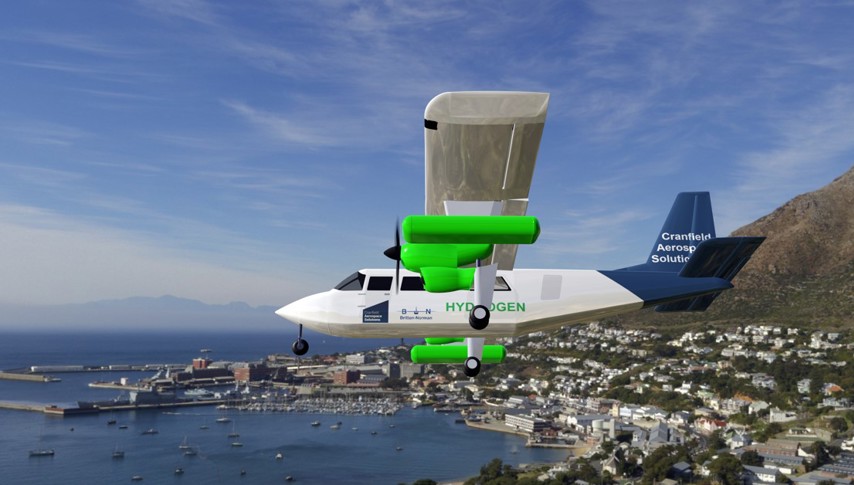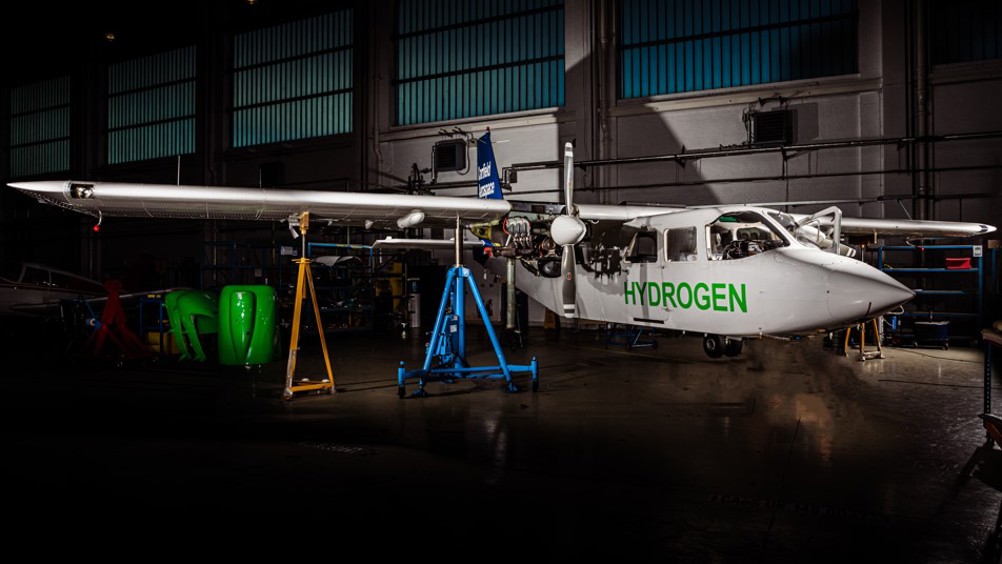It takes all sorts to drive a revolution. Whilst some trumpet every achievement and milestone from the roof-tops, others prefer to work quietly under the radar, only breaking cover when they’re confident they’ve got something to shout about. Cranfield Aerospace Solutions (CAeS) is one such company.
Originally spun out from Bedfordshire’s Cranfield University in the late 1990s, CAeS forged its reputation carrying out design, maintenance and modification work for some of the aerospace sector’s biggest names. But when current CEO - former Airbus and Thales executive Paul Hutton - came on board in 2015, he spotted an opportunity to apply this hard-won expertise to civil aviation’s biggest challenge - the push for net zero - and put in place an ambitious strategy to transform the company into a world-leading designer and manufacturer of zero carbon aircraft.
At the heart of this vision is an initiative dubbed project Fresson (named after Scottish aviation pioneer Ted Fresson) a multiphase effort aimed at delivering commercial hydrogen-electric powered flight, initially for regional and sub-regional flight. And whilst some of the firm’s traditional work continues - for instance CAeS remains responsible for keeping the BBMF (Battle of Britain Memorial Flight) Spitfires and Hurricanes up in the air - Fresson is now the prime area of focus.
As the first step on this path, the company is currently modifying a Britten-Norman Islander (a nine-seater light utility aircraft and regional aircraft still in service around the world) with a hydrogen fuel cell propulsion system. Current plans will see this demonstrator take to the skies around the beginning of next year, with a product following shortly after. Beyond that, the company hopes to scale up and apply its knowhow to progressively larger aircraft, ultimately positioning itself as a world-leading net-zero airframer.
Our ambition is to bring whole aircraft design and manufacture back to the UK
Robert Marsh - Director of Engineering, CAeS
It’s an ambition that represents a fundamental shift from its traditional focus but, as Cranfield’s Director of Engineering Robert Marsh explained, it’s a shift that builds on much of its existing expertise. “We already had a very experienced and skilled design production and maintenance organisation with a good range of CAA (Civil Aviation Authority) approvals, a good range of skills, and the bedrock of all those processes. All that kind of expertise is applicable to Fresson,” he said.
“We’re aircraft people,” added Chief Strategy Officer Jenny Kavanagh, “and we understand what happens to the performance and the behaviour of an aircraft when you modify it. We’ve got about 30 years of ingrained aircraft knowledge which is what you need to make such a huge modification to an aircraft.
It’s this pedigree, she claims, coupled with the kind of nimble startup mindset more readily associated with much younger companies, which gives the firm the edge over other more recent entrants to the field. “Part of the allure of these new companies is that they ask the difficult questions. And you need that when you’re trying to disrupt the technology of an industry. One of our USPs is the fact that we are asking those questions and challenging the norms, but we also have 30 years of experience.”
The company’s also taking a markedly different approach to some of these relative newcomers. For instance, whilst ZeroAvia (perhaps the best-known organisation in the regional flight hydrogen-electric space) is primarily focused on the development of hybrid powertrain IP, CAeS is more concerned with developing the practical knowledge around how a certifiable hydrogen propulsion system is integrated into an aircraft. “It’s about how you bring different technologies and optimise them properly to get not just something that proves physics, but something that is certifiable and commercially viable. That’s what we see is the real nut that you’ve got to crack,” said Kavanagh.
Cracking this nut, explained Marsh, brings a series of significant engineering challenges, not least a requirement for a “3D Tetris-like” approach to packaging, presented by the need to integrate an electric propulsion unit into a nacelle originally designed for a piston engine.
One of the biggest overarching challenges, he said, is the requirement to reduce mass wherever possible: “The systems we’re introducing are inherently heavier than the conventional system, so mass is a challenge both in terms of driving down the mass of new systems and saving mass in other areas.”
Another major hurdle relates to thermal management; with the relatively small difference between the operating temperature of the fuel cell of 70°C and ambient temperatures of around 50°C making it difficult to vent waste heat without incurring significant extra mass. “If you did it with a conventional car radiator it’d be so large the airplane wouldn’t get off the ground,” said Marsh. To address this, the team has been working with Reaction Engines on the development of a light, compact, low drag heat exchanger which draws on the Oxfordshire company’s pioneering work on its SABRE rocket engine.
With solutions to these and other key problems now in place, the team is gearing up for ground tests ahead of that first demonstrator flight, scheduled for the first quarter of 2024.
Assuming this goes to plan, a full flight test programme will follow and a commercial product - or more accurately a Supplemental Type Certificate (STC) giving full regulatory approval to modify the Islander - could be in place as soon as 2026. Kavanagh said the firm is already exploring a number of potential markets and expects the first applications to be in the UK, with Europe to follow shortly afterwards.

The team also has an eye on the next phase of project Fresson, which will explore scaling up the concept for larger, more powerful aircraft. To deliver the range required, this successor aircraft will use liquid rather than gaseous hydrogen, and the company’s currently exploring suitable candidates for retrofit at around the 19-seat size.
Beyond that - and further into the future - it expects to move into the realms of clean sheet design. “Retrofit will only get you so far,” said Kavanagh, “Hydrogen technology has got such an impact on airframe design that you very quickly become too restricted by an airframe that has been optimised to run on kerosene or gasoline. If you actually want to have an aircraft that’s…actually going to get the best out of the hydrogen propulsion system, the airframe needs to be working in symbiosis with the propulsion system.” These next generation hydrogen-electric aircraft will, she said, look very different. “Liquid hydrogen takes four times the volume of kerosene, so you have to design an airframe to fit that volume in without taking out half the seats. The aircraft are likely to be bigger, maybe with a greater wingspan, and certainly different shapes.”
In the meantime, however, the key focus is getting the Islander up in the air, and whilst this tiny aircraft won’t initially put much of a dent in civil aviation’s global emissions, Kavanagh believes its success will mark an important moment in the sector’s transition to cleaner forms of propulsion. “Sub regional aviation accounts for less than one per cent of the sector’s emissions so let’s be clear, these aircraft are not going to decarbonise aviation. But l believe the success of organisations like CAeS will mark an important tipping point…the gold with these small aircraft is what they facilitate. It’s about crossing that boundary.”
Whilst there are many major technical hurdles to overcome in pursuit of this ambitious vision, perhaps the biggest challenge facing the company right now is getting the right mix of skills on board.
The firm has grown rapidly in recent years, more than doubling its workforce to around 120 in the past five years. But it now needs to grow even more rapidly and is currently on the lookout for engineers from a range of sectors and disciplines, particularly in the field of hydrogen.
With other companies also eying up opportunities in this emerging sector, competition for these next-generation aerospace engineers is intense, but Marsh believes there are few more exciting destinations than CAeS. “The people that come here will see world-beating technology fly next year and there’s not that many jobs that offer that,” he said. “Our ambition is to bring whole aircraft design and manufacture back to the UK, so coming to work for us means that you will become part of - we hope - a successful ‘UK Airbus’, a proper aircraft manufacturer where you get to see aircraft coming off the line and flying out the door.”












Woodchips and biochar combined to clean pharmaceutical wastewater
´The biochar acted like activated carbon´ no, they are literally MAKING activated carbon <a...